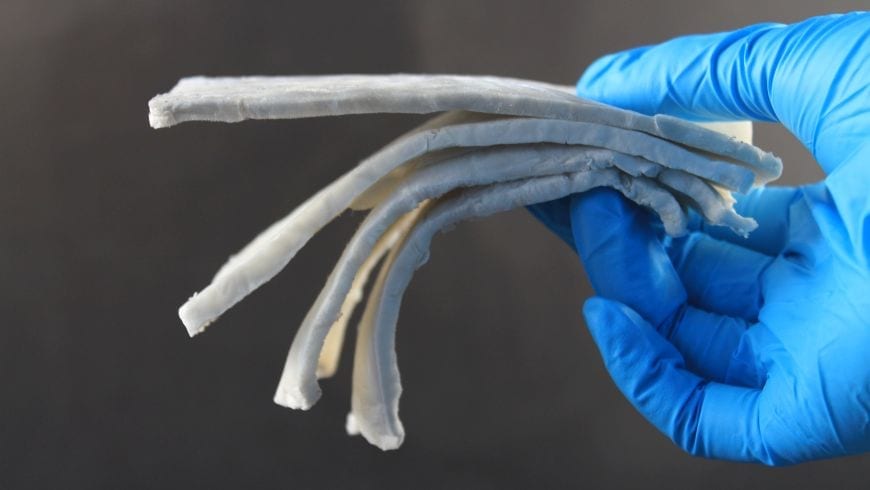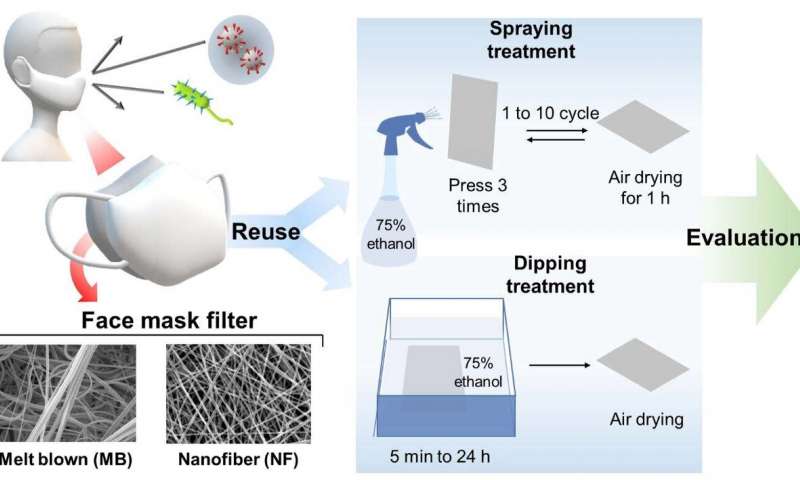
via Kläui Lab
Diagram of a device architecture which employs the piezoelectric effect
A research team of Johannes Gutenberg University of Mainz has developed a technique that will potentially halve the energy required to write data to servers and make it easier to construct complex server architectures
- Whether it’s sending the grandparents a few pictures of the kids, streaming a movie or music, or surfing the Internet for hours, the volume of data our society generates is increasing all the time. But this comes at a price, since storing data consumes huge amounts of energy. Assuming that data volumes continue to grow in future, the related energy consumption will also increase by several orders of magnitude. For example, it is predicted that energy consumption in the IT sector will rise to ten petawatt-hours, or ten trillion kilowatt-hours, by 2030. This would be equivalent to around half of the electricity produced worldwide.
- But what can be done to reduce the amount of power needed by servers to function? Data is usually stored in a storage layer with the help of magnetization. To write or delete the data, electric currents are passed through ferromagnetic multilayer structures, where the flowing electrons generate an effective magnetic field. The magnetization in the storage layer “senses” this magnetic field and changes its direction accordingly. However, each electron can only be used once. An important step forward in energy-efficient data storage involves the construction of a ferromagnetic storage layer that includes a heavy metal such as platinum. As the current flows through the heavy metal, the electrons switch back and forth between the heavy metal and the ferromagnetic layer. The great advantage of this technique is that the electrons can be re-used multiple times, and the current required to write the data decreases by a factor of up to a thousand.
The Latest Updates from Bing News & Google News
Go deeper with Bing News on:
Data storage
- Reshaping the data center: IBM’s advancements in storage technology
Stay ahead with IBM's future-ready solutions in storage technology. Learn how IBM addresses key infrastructure challenges and leverages AI.
- Distributed cloud may solve data management challenges
At the forefront of cybersecurity concerns is data sovereignty. Despite major cloud providers’ best efforts to align with strict regulations such as NIS2, ISO 27001, and GDPR, the landscape remains ...
- The Week in Polkadot: Web3 Foundation Backs Decentralized Storage
The Web3 Foundation backs decentralized storage project StorageHub, while Polkadot founder Gavin Wood launches a new podcast. (Sponsored post by Polkadot Community) ...
- The Varying Methods Companies are Using to Manage Data and Analytics
Methods of data management across the packaging and processing industry vary greatly, but one major trend with some controversy is the move toward cloud storage.
- Amazon planned data center campus slated to be largest private investment in Indiana
One of the nation’s biggest companies plans to significantly increase its presence in Indiana by making the largest one-time economic development in the state’s history, Gov.
Go deeper with Google Headlines on:
Data storage
[google_news title=”” keyword=”data storage” num_posts=”5″ blurb_length=”0″ show_thumb=”left”]
Go deeper with Bing News on:
Data storage energy consumption
- IEA calls for sixfold expansion of global energy storage capacity
The International Energy Agency (IEA) has issued its first report on the importance of battery energy storage technology in the energy transition. It has found that tripling renewable energy capacity ...
- Battery energy storage developments that are electrifying the sector
Battery energy storage is vital for a clean energy future. How is the industry moving forward? We explore developments in the sector.
- Banks don't talk about the energy AI guzzles. Here's why they should.
Artificial intelligence models are energy hogs. Climate First Bank and UBS are among the very few trying to solve this problem.
- OpenAI's Sam Altman Invests $20M In Startup Using Solar Power To Address AI's Massive Energy Appetite
OpenAI CEO Sam Altman has invested $20 million in Exowatt, an energy startup aiming to address the soaring electricity demands of artificial intelligence (AI) data centers. What Happened: Altman, ...
- NextEra Energy Dials Up Solar as Power Demand Grows
NextEra’s renewable energy arm added about 2,765 megawatts to its backlog in first-quarter 2024, marking its second-best quarter for renewables — and the best for solar and storage origination.
Go deeper with Google Headlines on:
Data storage energy consumption
[google_news title=”” keyword=”data storage energy consumption” num_posts=”5″ blurb_length=”0″ show_thumb=”left”]









